Introduction
During our introduction week to semester three. We were split into different groups. Each group was tasked to make a product that might be developed in 2050. We could pick one of these eight subjects. As a group we were in doubt about choosing Love, Healthcare and Entertainment. We first chose healthcare because we thought this would be very important in the future.
First Research
On day one everyone started with a few insights on research. I was a big fan of nanotechnology and 3d printing because I think that these two subjects will be huge in the future.
Main insights from research
- Targeted Drug Delivery: Nanotechnology will enable drugs to be delivered precisely where they are needed, minimizing side effects and maximizing effectiveness, particularly in cancer treatment.
- Nanobots in the Bloodstream: Nanobots could be deployed to identify and repair cellular damage, clear clots, or even fight infections directly inside the body
- Illness: What if we can use nanotechnology to prevent illnesses from developing, for example with nanobots we can see if the water you drink is clean or dirty. Dirt water causes a lot of diseases so we can easily combat those. Combining this with our Wearables idea we can make a good anti-disease mechanism
- Custom Implants and Prosthetics: 3D printing will allow for the creation of highly customized implants and prosthetics, perfectly suited to an individual's anatomy.
- Organ Bioprinting: Lab-grown organs using a patient's own cells will reduce the need for organ donors, potentially eliminating transplant waiting lists and the risk of organ rejection.
What-If Statements
After everyone did some research we made some what-if statements.
- What if we make a bracelet for people to wear that will analyse the human body and sent data to the doctors.
- What if we make an exo skeleton for disabled people so that they can move and do daily activities.
- What if people with lung problems could exercise like other people?
- What if we add nanotechnology to the human body, so that this tech can detect causes for diseases before they develop.
- What if 3d printers exist that can develop organs and bodyparts for humans/animals
- What if we make a chip that can restore memory loss for people with Alzheimer's/Dementia.
Concept Board
- Idea 1: Exoskeleton for people that are disabled/unable to move. Using the brain and an implant we can read what the user wants to achieve and with the use of the exoskeleton this can be possible.
- Idea 2: Use nanotechnology to detect diseases before they develop. For example, test the water that is in the body. Dirty water has a high risk of developing diseases and infections. The nanotechnology will also notify the user and doctors when something is wrong with the user’s body
- Idea 3: A headset that can relive memories, these memories will be stored on SD cards that can be traded with other people to experience memories they never got to experience.
Flashback LO1
So, we finally concluded to make a headset like device that people can put memories in using SD cards, these memories could be anyone's memory, which means we can share memories with other people. So you might think how does this device work? Well there is a neuro device in the brain at all times to document feelings.
Concept 1 LO1
Concept 2 LO1
I came up with the idea to add sd-cards that you can put in the device. Using the headset itself you can store memories on the sd-card.
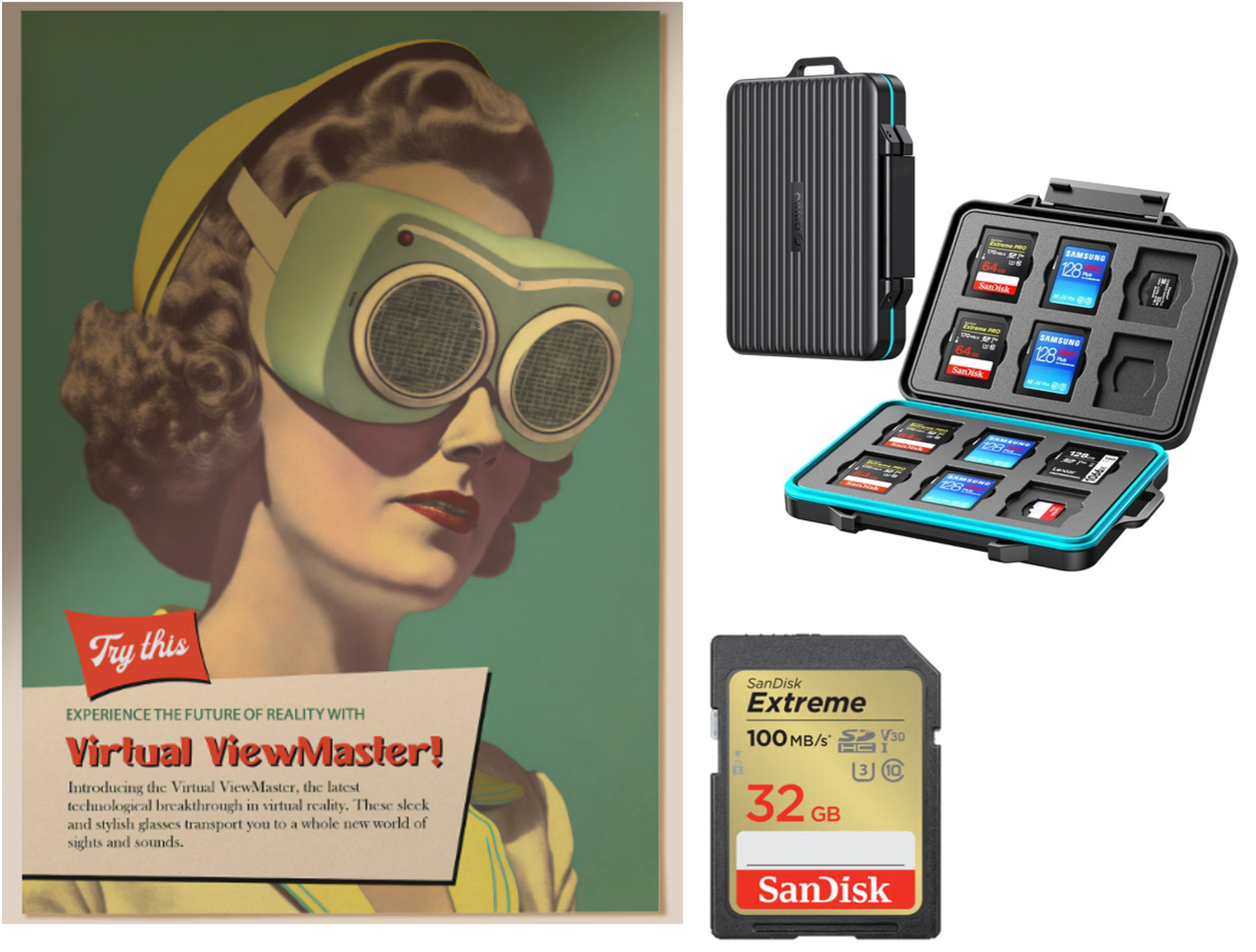 Figure 1 - Devan Janssen
Figure 1 - Devan Janssen
Matheusz also made a concept. This concept is more refined, you can find it below.
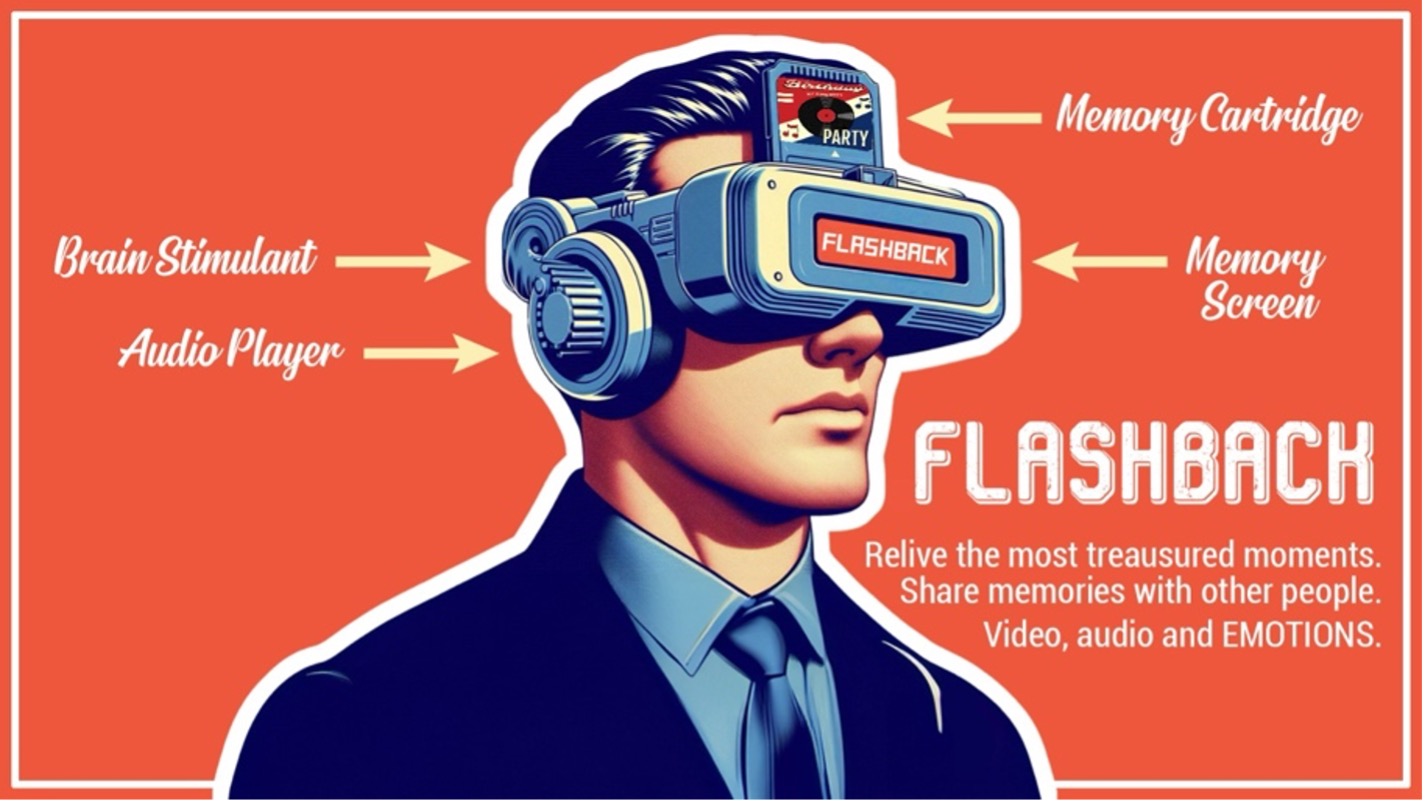 Figure 2 - Matheusz
Figure 2 - Matheusz
Posters LO1
Matheusz also made some posters, Vassil made some anti-posters. You can find these below.
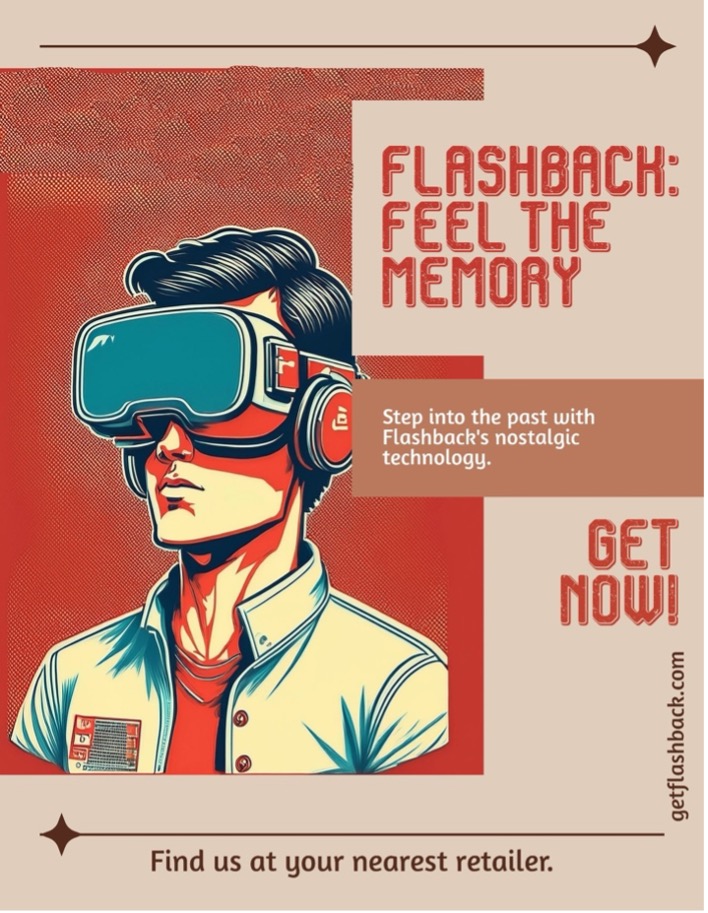 Figure 3.1 - Matheusz
Figure 3.1 - Matheusz
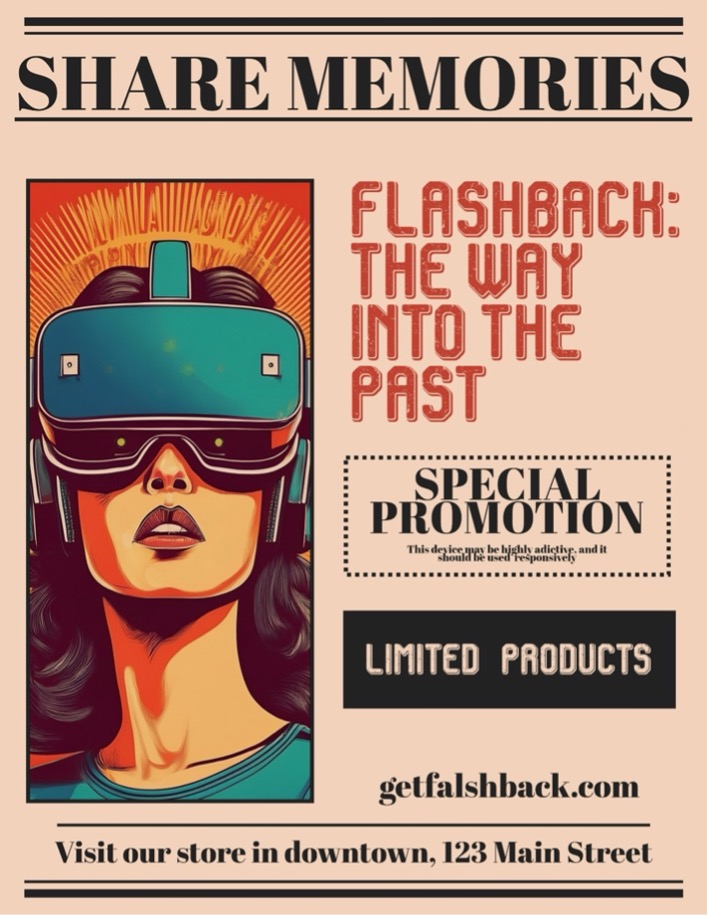 Figure 3.2 - Matheusz
Figure 3.2 - Matheusz
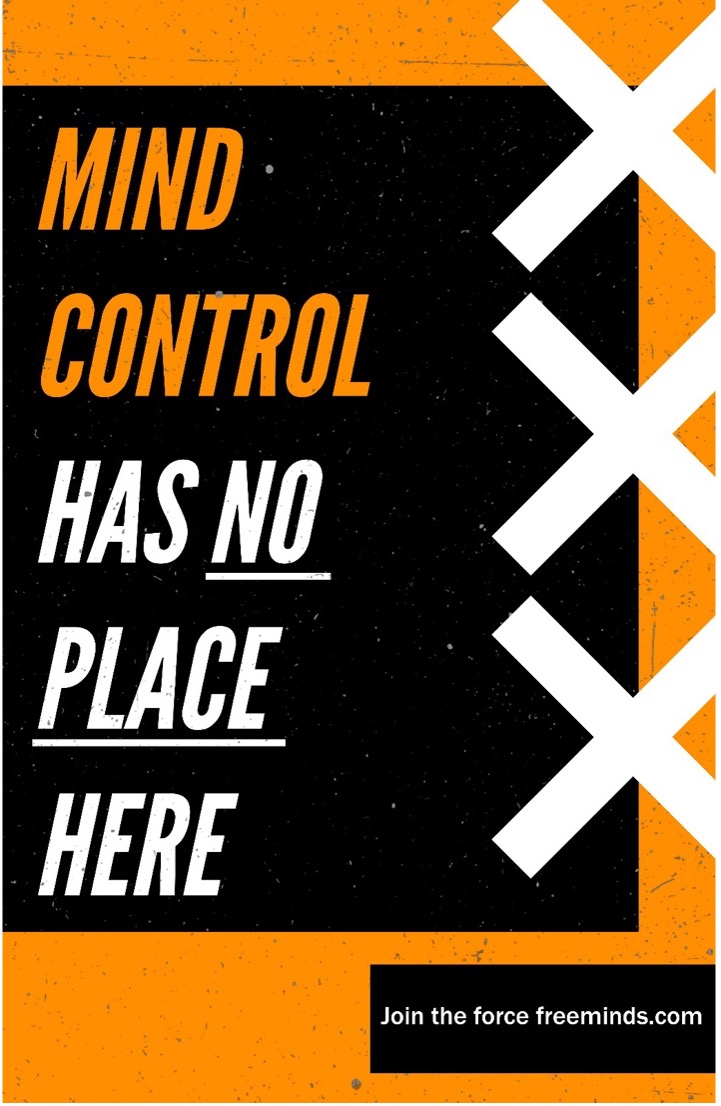 Figure 4.1 - Vassil
Figure 4.1 - Vassil
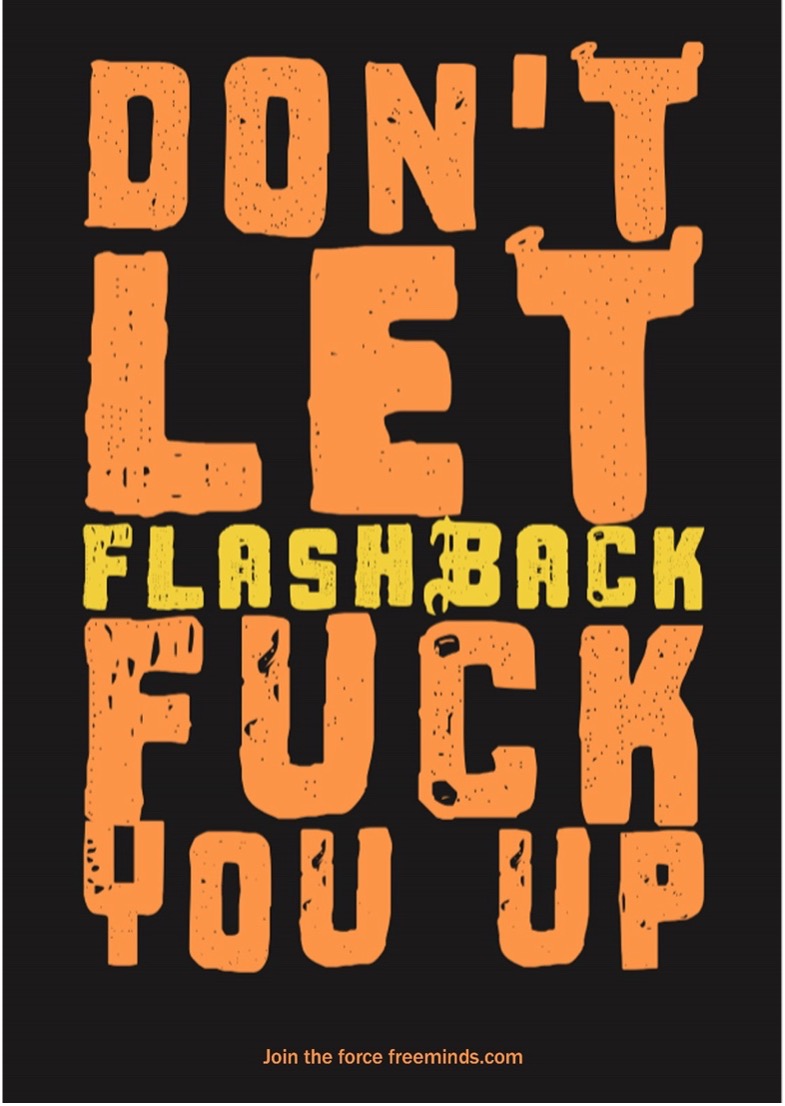 Figure 4.2 - Vassil
Figure 4.2 - Vassil
Ethics
We started to work on the logic behind our concept because of course there are a lot of privacy issues etc. So, we came up with the neurolink. This device is planted in the brain and can always record everything. The headset itself just extract everything from the neurolink. The user itself can decide which parts he/she wants to extract. Each memory can only be extracted to one SD card. So that there are no chances of duplication memories and selling them. You can however still share your memories with friends/family but only one at the time. This device can also be used during school to give instructions or teach.